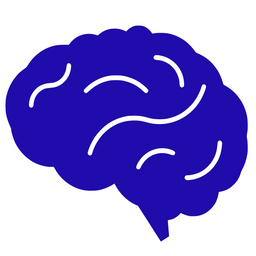Developing perfect study notes is the first step in achieving academic success, and to develop those perfect study notes, you need to develop a good routine so that you stay consistent throughout the year.
Let me break down for you the exact note-taking routine I used to score a 99+ ATAR.
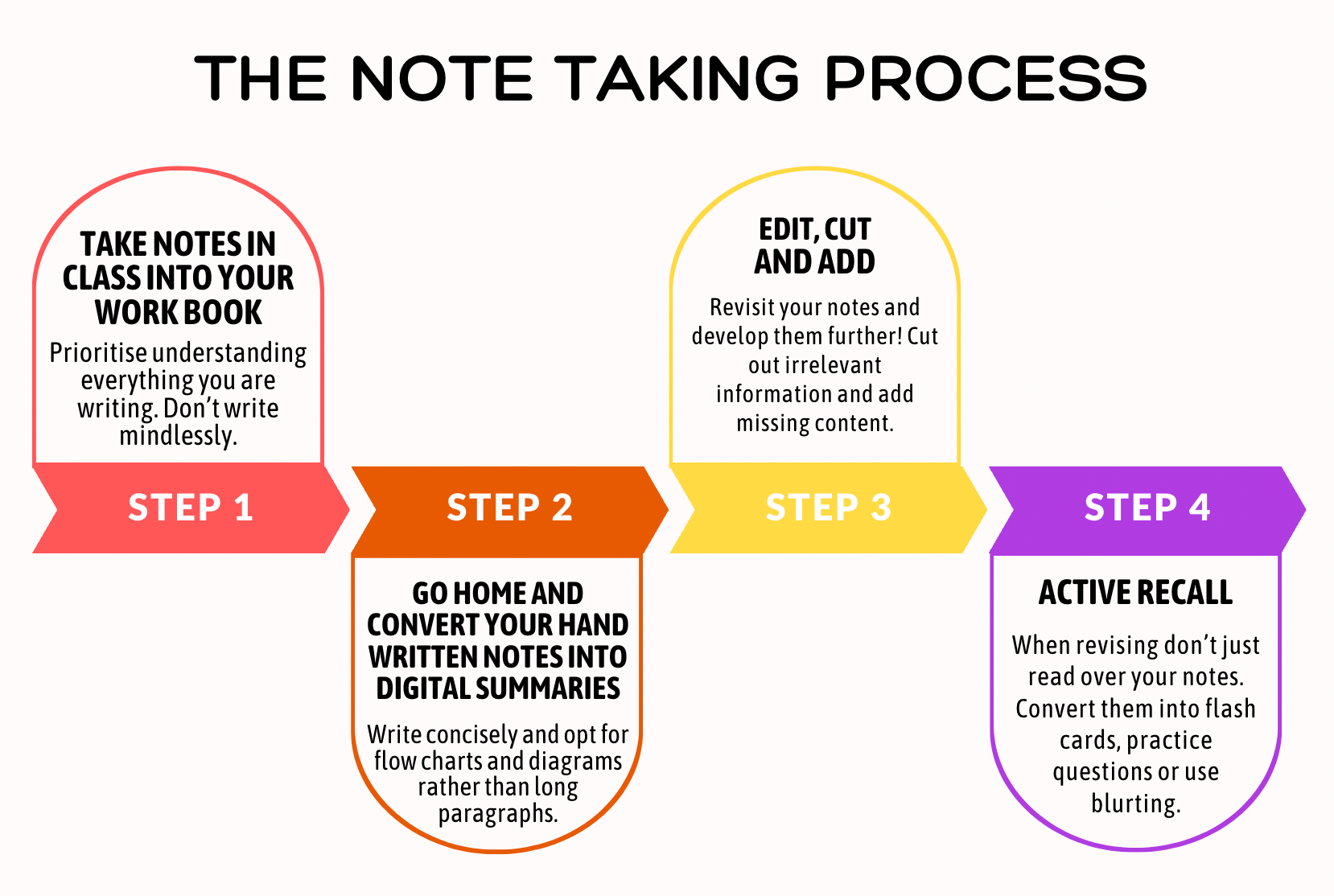
Take Handwritten notes in class
When first exposed to the new source material (either through class, from tutoring, online videos or from reading a textbook) I always handwrite my notes. Why? Handwriting notes is scientifically proven to help you absorb and retain content better. Yes, it takes me longer but it also gives me the time to actually process the information as I write and when initially exposed to a new source the most important part is understanding.
For my hand-written notes, I like to use the outlining method.
- Outlining Method
- Write down the main topic at the top of the page.
- Write down the sub-topics and underneath it elaborate with more information.
- Indent to the right and note any sub-points below.
- If your sub-points require more elaboration, indent to the right and start adding new points below
- Repeat and use arrows and rough sketches when you can.
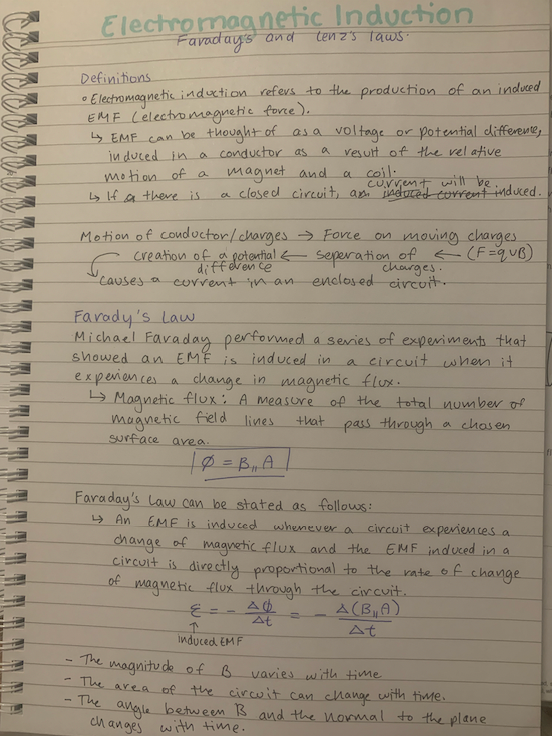
Outlining method is the best note-taking method for when there is a time crunch (for example your teacher is flipping through slides in class) and when you don't know anything about the topic or what's coming next. You are essentially just writing everything down as they are being taught to you.
Then once you are in the peace and quiet of home convert your messy handwritten notes into neat digital summary tables.
Convert into Digital Summaries
These digital summaries are what you will rely on during exam season so you want to make them as organised as possible. To do this, make sure you are ORGANISING YOUR NOTES BASED ON THE SYLLABUS DOT POINTS!!!
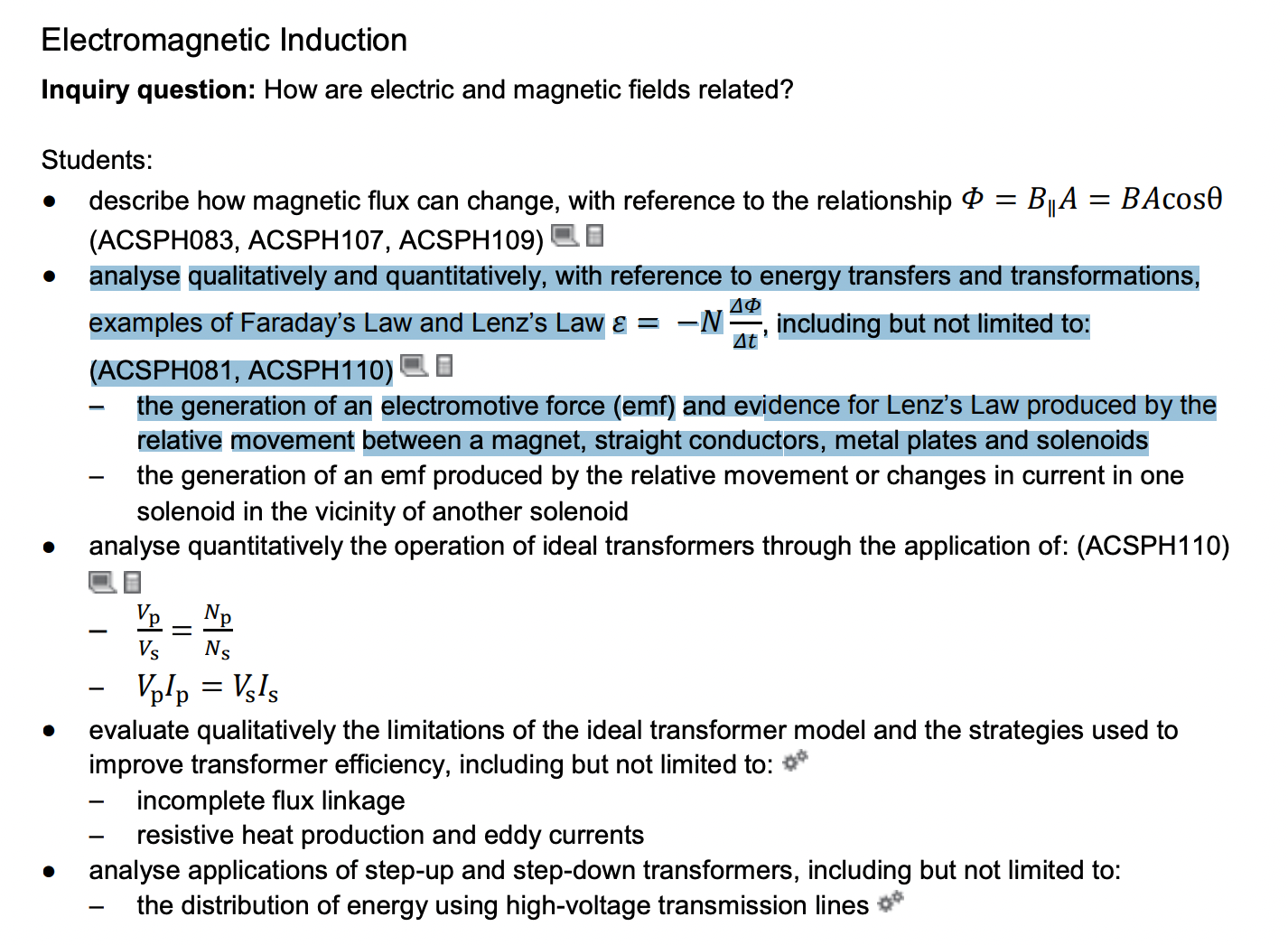
Before you even start writing your notes, identify which syllabus dot point you are covering and highlight it. This way you can look back later in the term and see if you have missed anything.
I like to create my digital summaries with the Cornell tables because, in my opinion, they are the most structured making it easy to revise quickly come exam time.
- Cornell Method
Title your summary table and write the syllabus point you are covering underneath.
On the left, write down key formulas, theories and ideas. On the right, write down your main notes. At the bottom, summarise all the main points concisely.
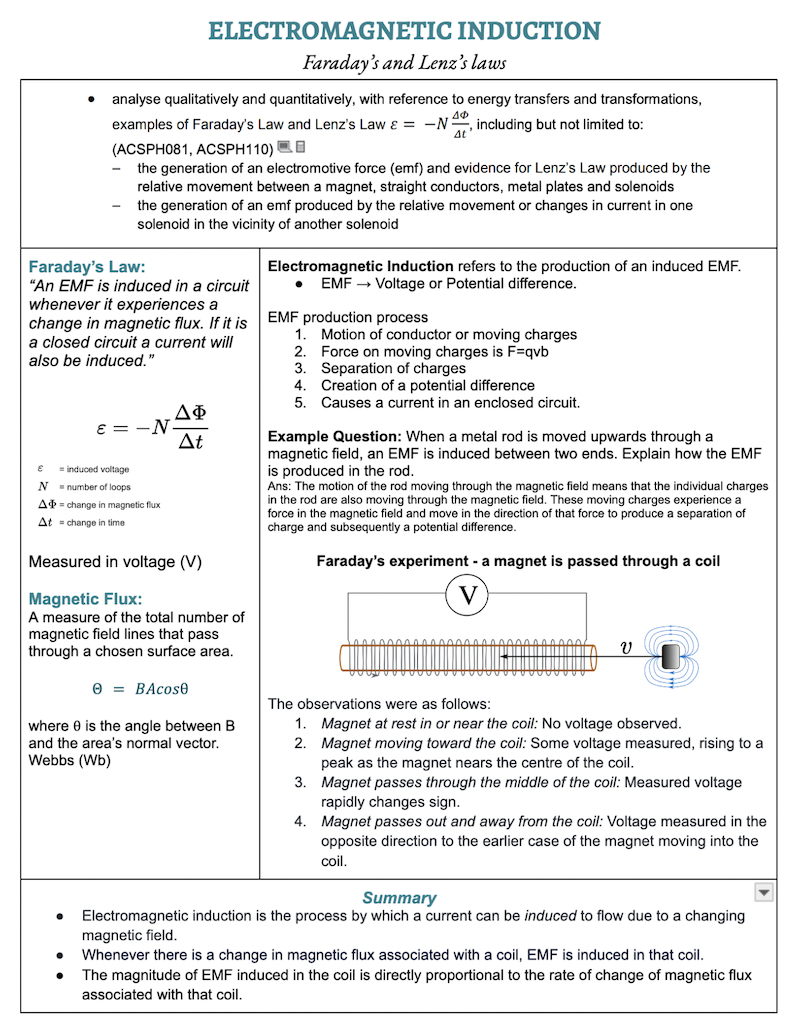
Remember to review these notes regularly, editing them to ensure they don't miss any important details and also cutting out information that becomes irrelevant. When studying, avoid always just re-reading your summary tables. Rather, use them as extra support as you work through practice papers.

My Final Tips
- When summarising, don't write full sentences, only phrases! Only note down the keywords that you need to get an idea of the point. Skip words like “the” and “a” that don’t add additional meaning to the content. Keep key or specific terms.
- Take notes in your own words. Paraphrase the content so it makes sense to you. It will help you to understand and remember content better. Try to paraphrase everything except where information needs to be noted exactly - like laws, theories or formulas.
- Use colour and symbols to create structure and emphasis. Highlight, underline, circle, star, etc. to identify key formulas, examples, definitions, or other important information.
- Draw diagrams or flowcharts where possible. This will not only help you understand the material more but also help you remember it better. You will be able to correlate complex ideas with simple prompts.

Want personalised study guidance to help drastically improve your marks? A private tutor can make the biggest difference!
Written by KIS Academics Tutor for HSC Physics, Thao Peli Nghiem Xuan. Thao received an ATAR of 99.55 and is pursuing a Bachelor of Mechanical Engineering at the University Of New South Wales. You can view Thao's profile here and request her as a tutor.


